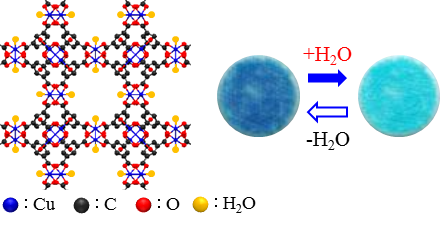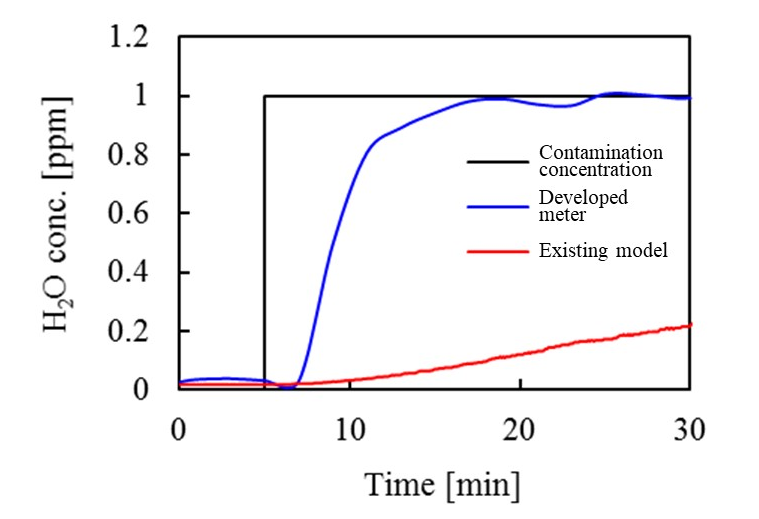Taiyo Nippon Sanso Corporation (“TNSC”) hereby announces that it has successfully developed a trace moisture analyzer in nitrogen using properties from a metal organic framework (MOF) with optical characteristics that change depending on absorption and desorption of moisture.
1. Background
If moisture contaminates high-purity gases used in many industries, including semiconductor manufacturing, it can cause oxidization, worsening product performance or yields. Moisture not only exists in massive amounts within the atmosphere it can easily attach to a variety of substances because of its nature as a polar molecule. Once moisture has contaminated the manufacturing process, removal requires large amounts of high-purity gases. Consequently, multipoint monitoring of moisture concentration in industrial-use gases is needed for manufacturing processes vulnerable to trace moisture, but no compact, inexpensive trace moisture analyzer existed that satisfied requirements for timeliness, high sensitivity and high reliability.
TNSC conducted research jointly with Associate Professor Shin-Ichi Ohira of the Faculty of Advanced Science and Technology at Kumamoto University to develop a analyzer for trace moisture in nitrogen using an MOF with a porous structure as a moisture-sensitive agent that fulfills a response speed of less than 5 minutes and lower detection limit of 10 vol. ppb at a cost of less than \1 million.
2. Technical Overview
MOF is a porous agent group formed through a coordinate bond between metal ions and organic ligands, and is a next-generation functional material expected to be used in applications such as gas storage, separation, or catalyst.
Cu-BTC is an MOF formed by divalent copper ion (Cu
2+) and benzene-1,3,5-tricarboxylate (BTC) that absorbs and desorbs moisture molecules at room temperature and specific wavelength absorbance changes in conjunction with that (Fig. 1). The analyzer’s basic principle is to detect the absorbance change and convert that to moisture concentration.
In trace amounts, changes in moisture concentration have a rapid and high correlation with changes in absorbance, so showing this enables highly reliable measurements of high sensitivity and rapid responsiveness. As shown in the measurement example in Fig. 2, the indicated values rose immediately after the introduction of nitrogen gas containing trace amounts of moisture, confirming that the analyzer responds faster than conventional general-purpose analyzers and solidifying that it can be used as a moisture impurity concentration control device in processes with extreme moisture aversion.

Fig. 1: Cu-BTC structure and absorbance change

Fig. 2: Example of measurements of trace amounts of moisture in nitrogen
3. Future Plans
TNSC plans to move forward with testing at its related plants, and progress to public sales within the fiscal year ending 2021 (from April 2020 to March 2021) through long-term field testing in actual environments. The Company will also move ahead on technological development and commercialization for application with other types of gases and greater sensitivity.
Taiyo Nippon Sanso Corporation
Tnsc.Info@tn-sanso.co.jp
PDF